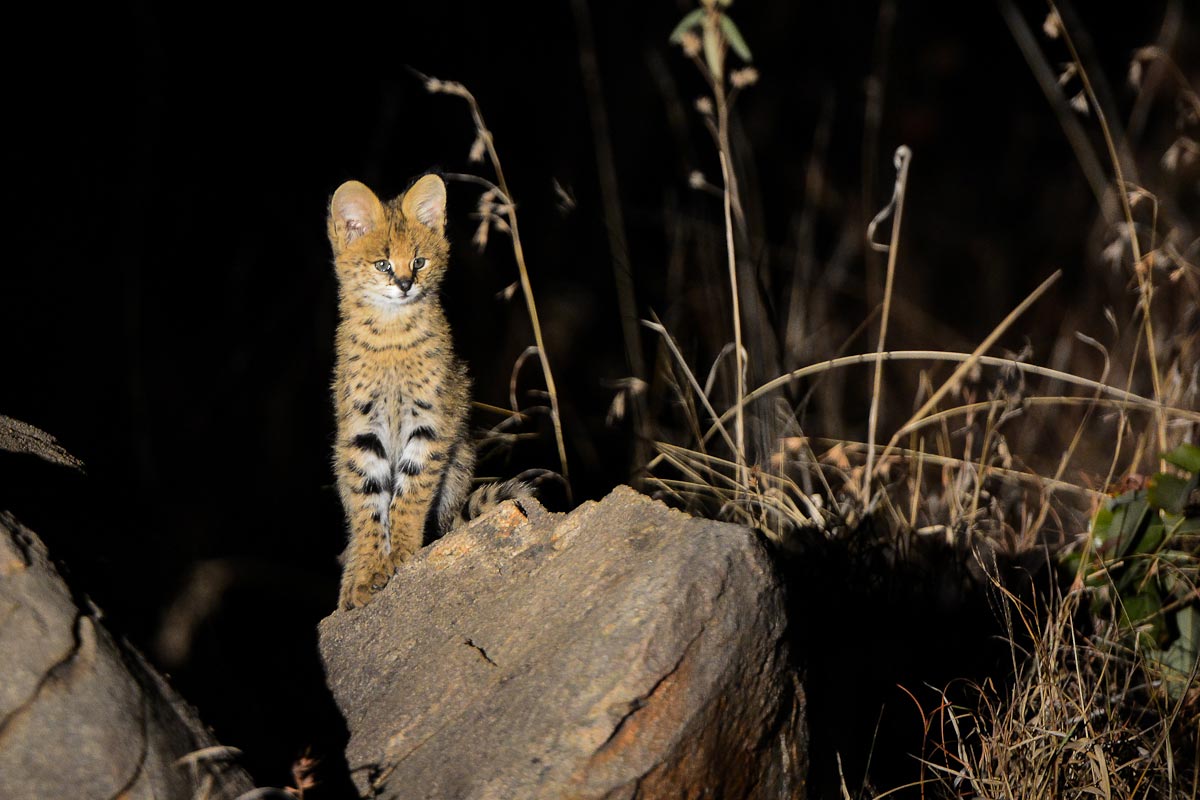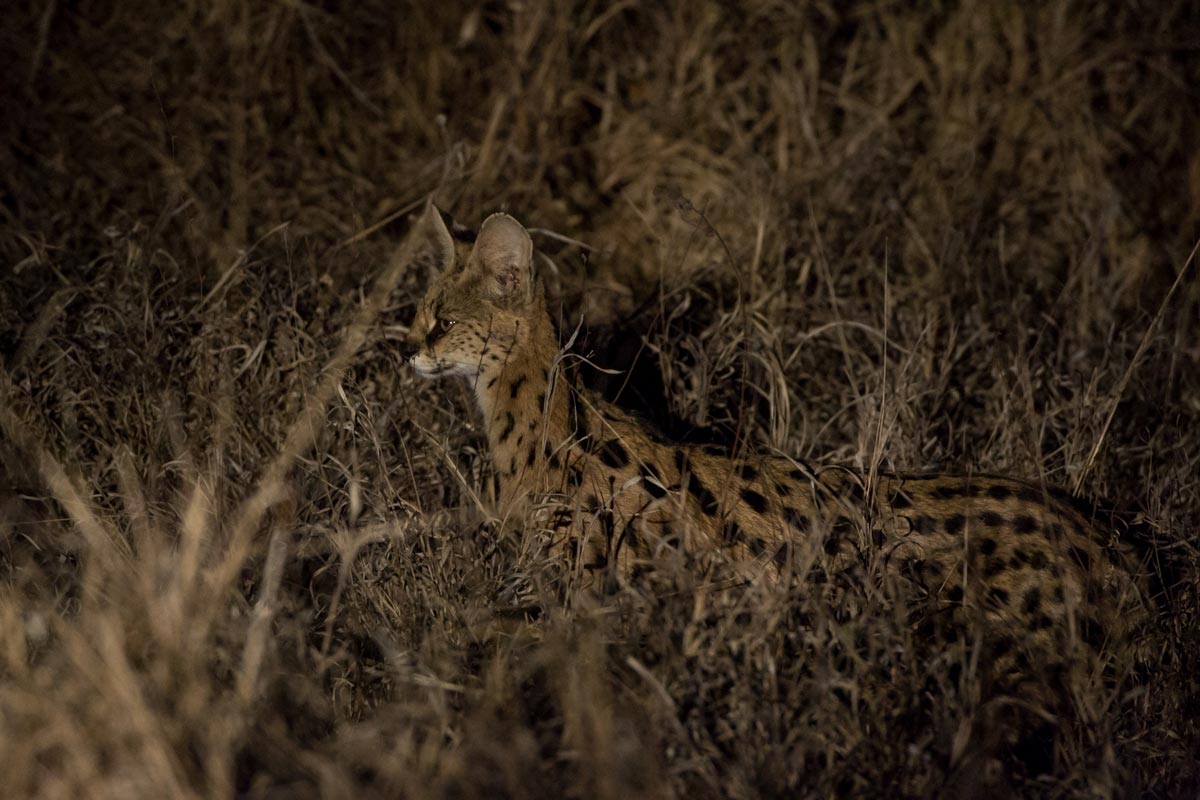Sabi Sabi Wild Facts: The Serval
on Dec 14, 2014The serval, Leptailarus Serval, is a mid-size wild cat, the tallest of the small cats found in Africa. This carnivorous mammal has several nicknames, including Tierboskat, (Afrikaans), meaning "tiger-forest-cat", bush cat, and giraffe cat. A highly secretive creature, the serval is found in all kinds of African savannah south of the Sahara (except for the central equatorial region and the very southern part of the continent), preferring areas with tall grass and plenty of water. The serval cat has a long neck and legs, a lean body and big ears. It is closely related to the caracal.

Servals are the most successful hunters of all cat species. Whereas lions and leopards are only successful in taking down prey 3 or 4 times in every 10 attempts, these little cats are able to make a kill 50% of the time. They are crepuscular - hunting at dusk, and may also hunt at night. Servals have several adaptions which have allowed them to develop into exceptional hunters. They have extremely large ears which act as antennae, with such acute hearing that they can detect their prey underground. Their long necks allow them to see over tall grass; they can jump 2 -3 metres into the air, and can run at a speed of up to 80km/h.
A serval's territory may overlap with the territory of a caracal, and although they may compete for food the serval's prey is generally smaller than that of its cousin. Serval diets consist mainly of mice, rodents, lizards, frogs and small birds, and, unlike other cats, the serval will even enter water to catch birds or fish. On land they will usually stand still and watch and listen carefully, positioning their prey. Then, with their wonderfully designed bodies and legs, they are able to leap into the air and pounce, pinning down their quarry. Or, if the target is a rodent underground, the serval may dig its meal out of its burrow. But these determined hunters don't only have the ability to pounce, they are able to quickly change direction while running at full speed or while jumping, and are capable of plucking a bird from mid-air. After catching its prey, a serval will often play with its meal before consuming it.

Servals are territorial cats, solitary except when mating or while the female still has her young. Occasionally two serval territories might overlap and in which case the servals will try and avoid one another. Females are more tolerant of each other than males. Both sexes mark their territory through spraying urine on grass or bushes. The males weigh in at about 13kg with the female only 2 - 3 kg lighter. Not a lot is known about the mating behaviours of servals, but after a gestation period of three to four months the female produces a litter of 2 - 3 helpless young which are blind for the first 9 - 12 days of their lives. Being solitary the female is the only parent caring for the young, and she leaves them hidden in dense vegetation or abandoned burrows while she hunts. Soon after the male kittens can hunt for themselves they are driven away to establish their own territories. The mother will tolerate the female kittens for a lot longer.
Servals are beautiful creatures with distinctive tawny fur covered with black spots and bands. They make many different sounds and communicate with each other with a high-pitched cry. As with other cats, they snarl, growl and spit in anger, and purr in contentment. Their natural enemies are other predators such as hyena, leopard and wild dog.






